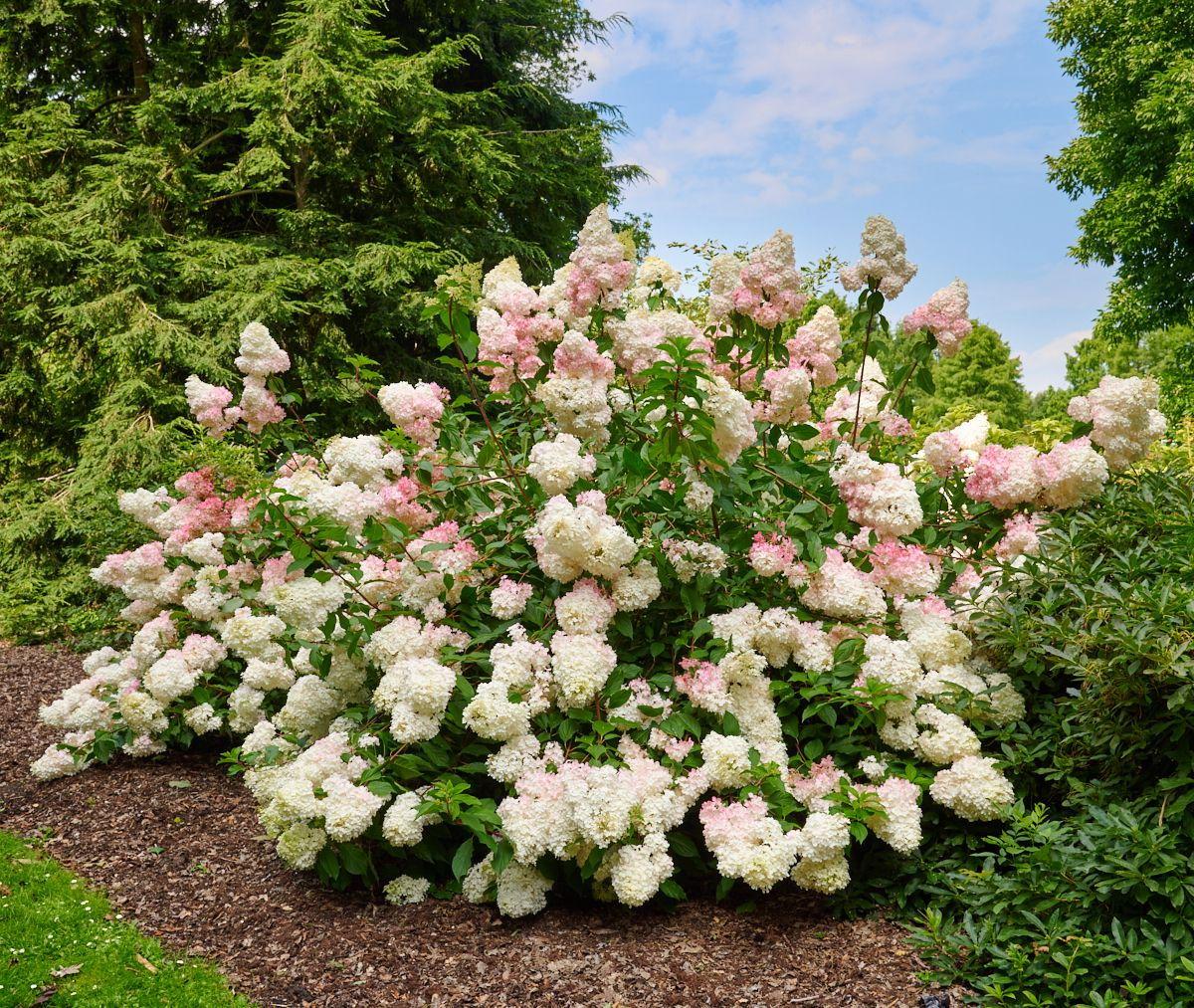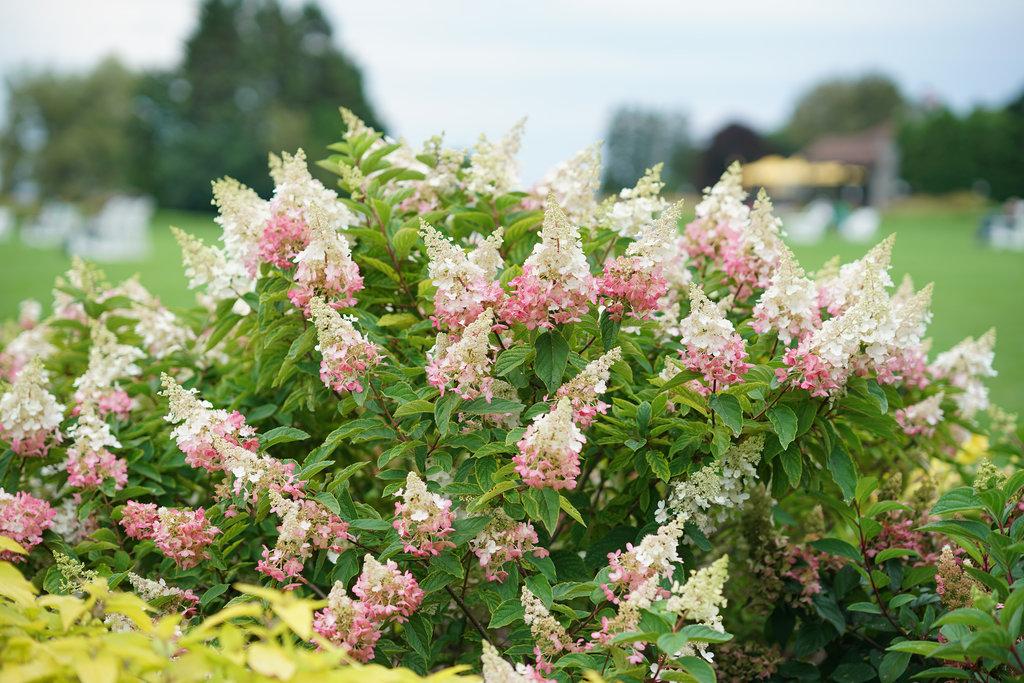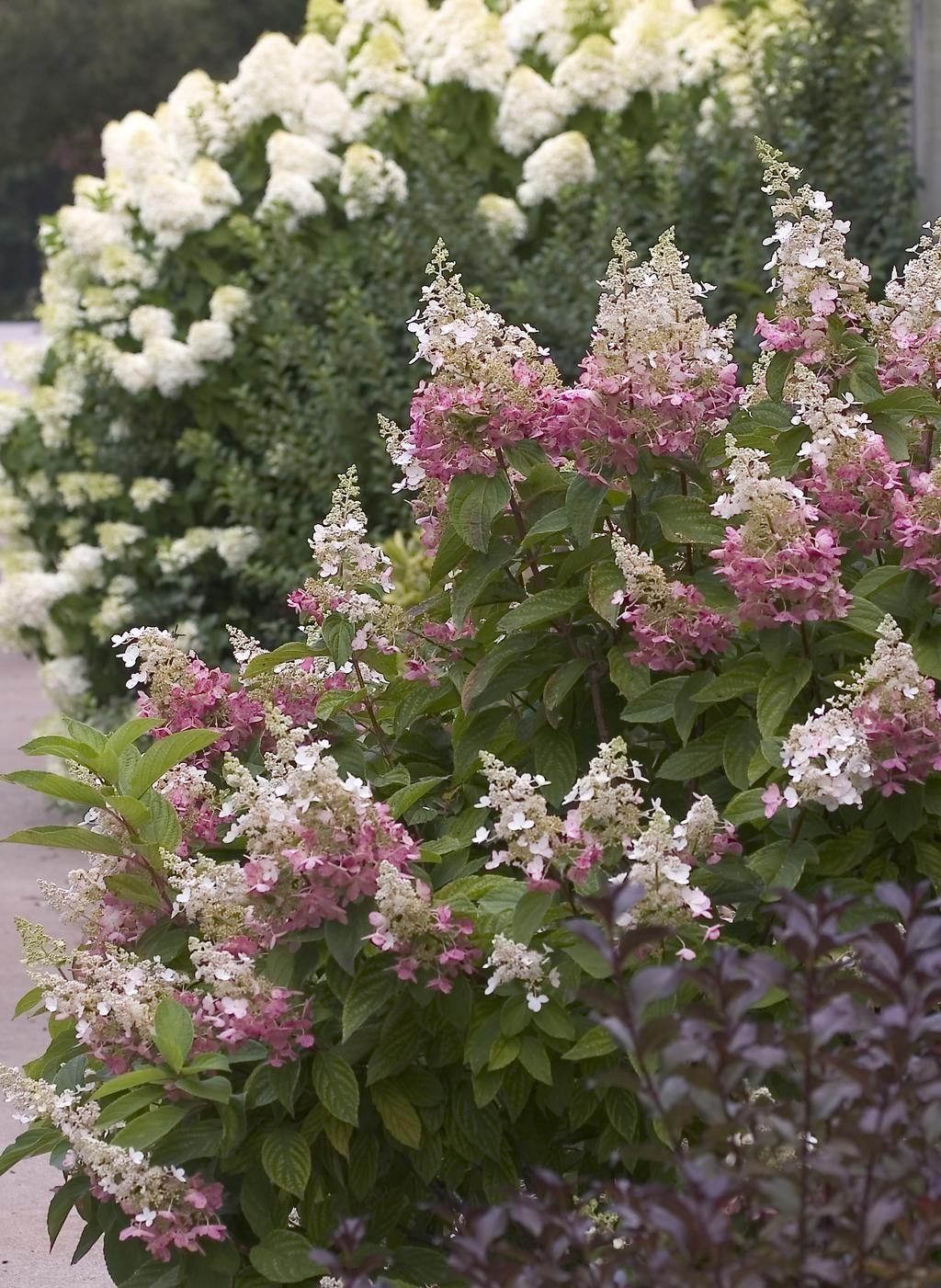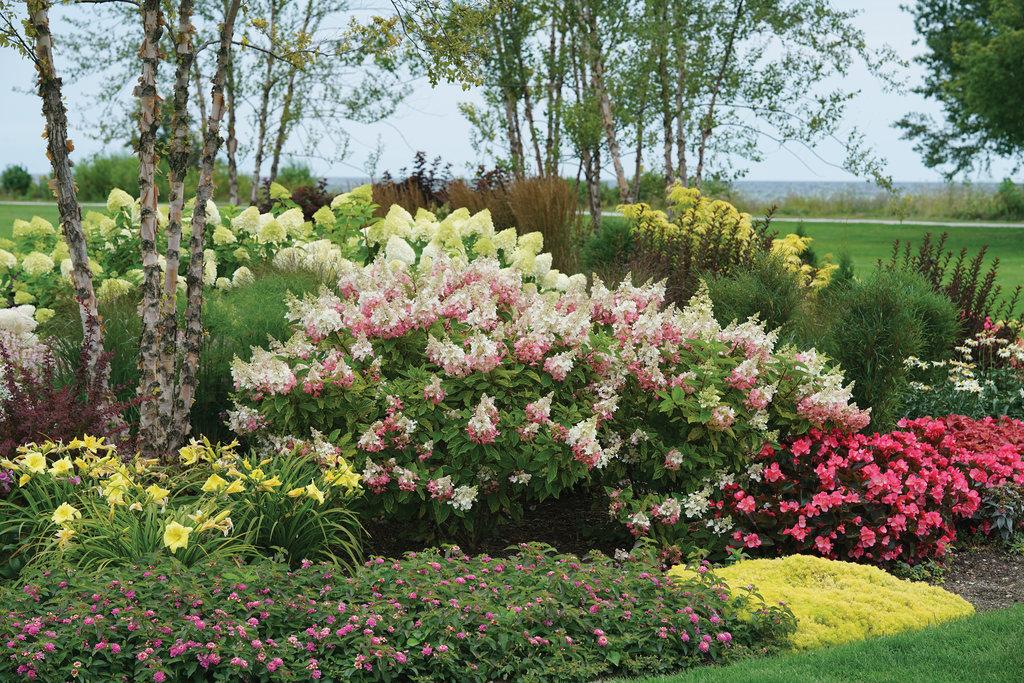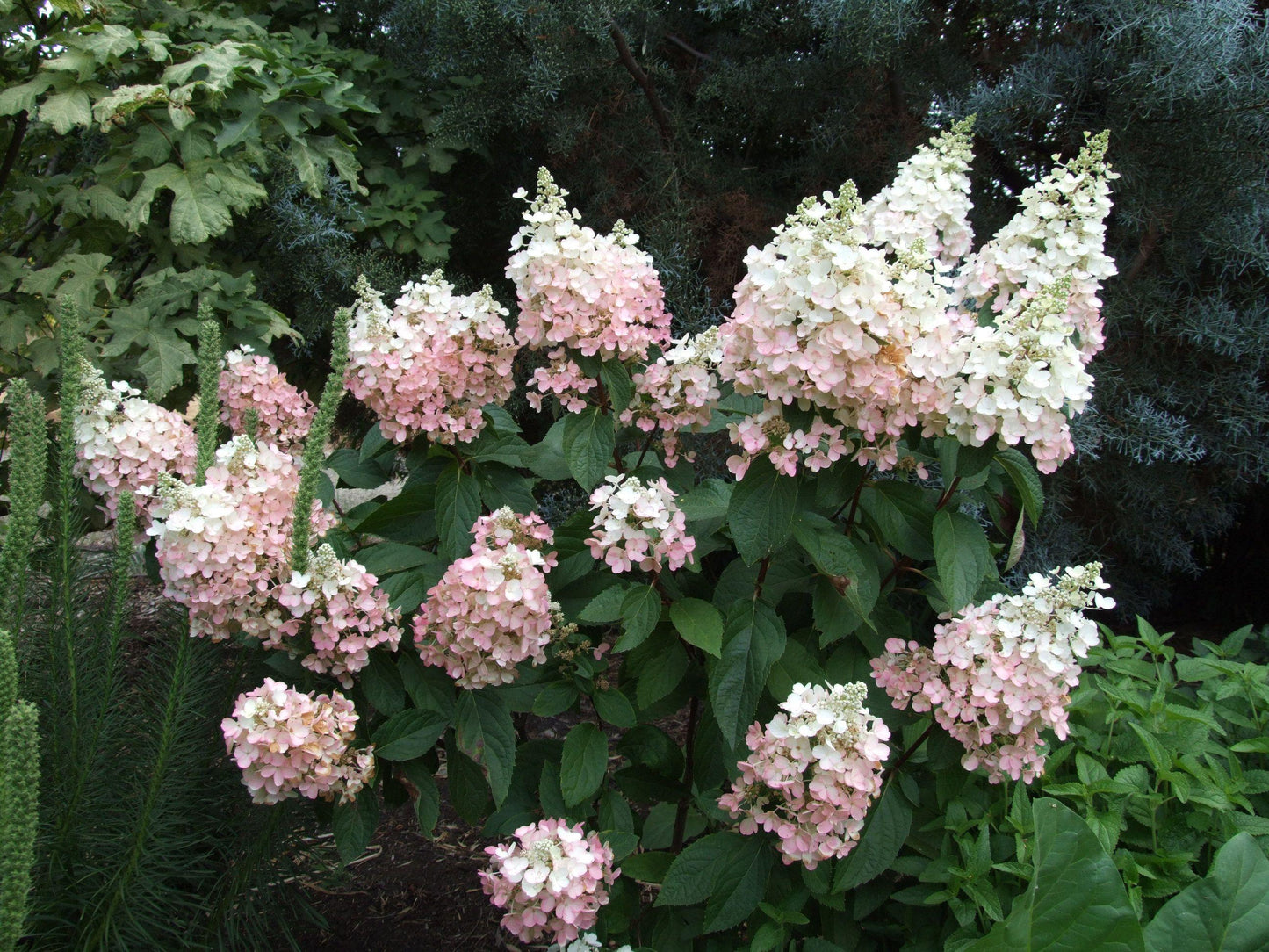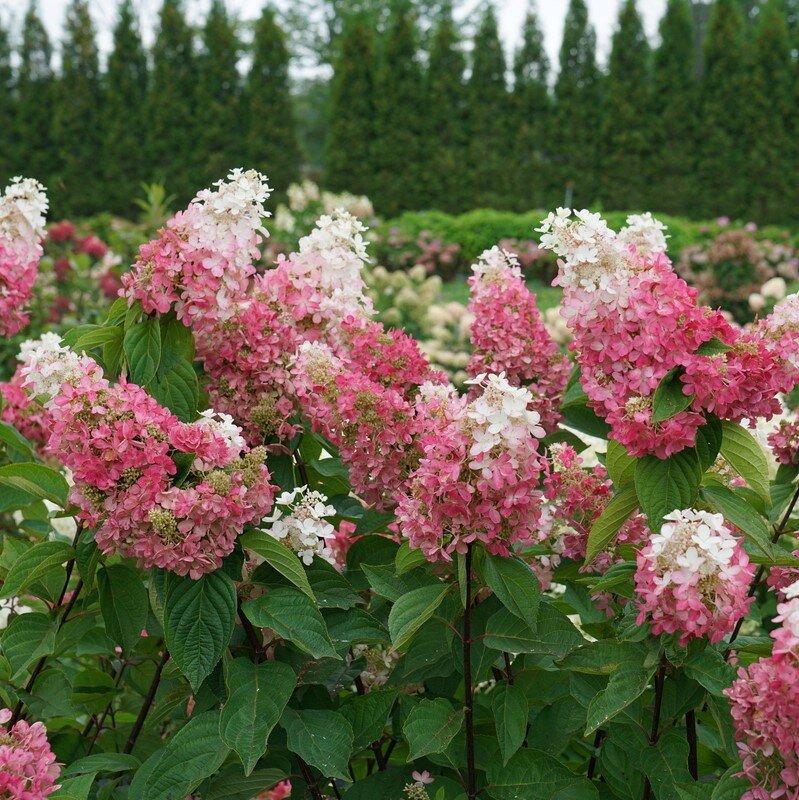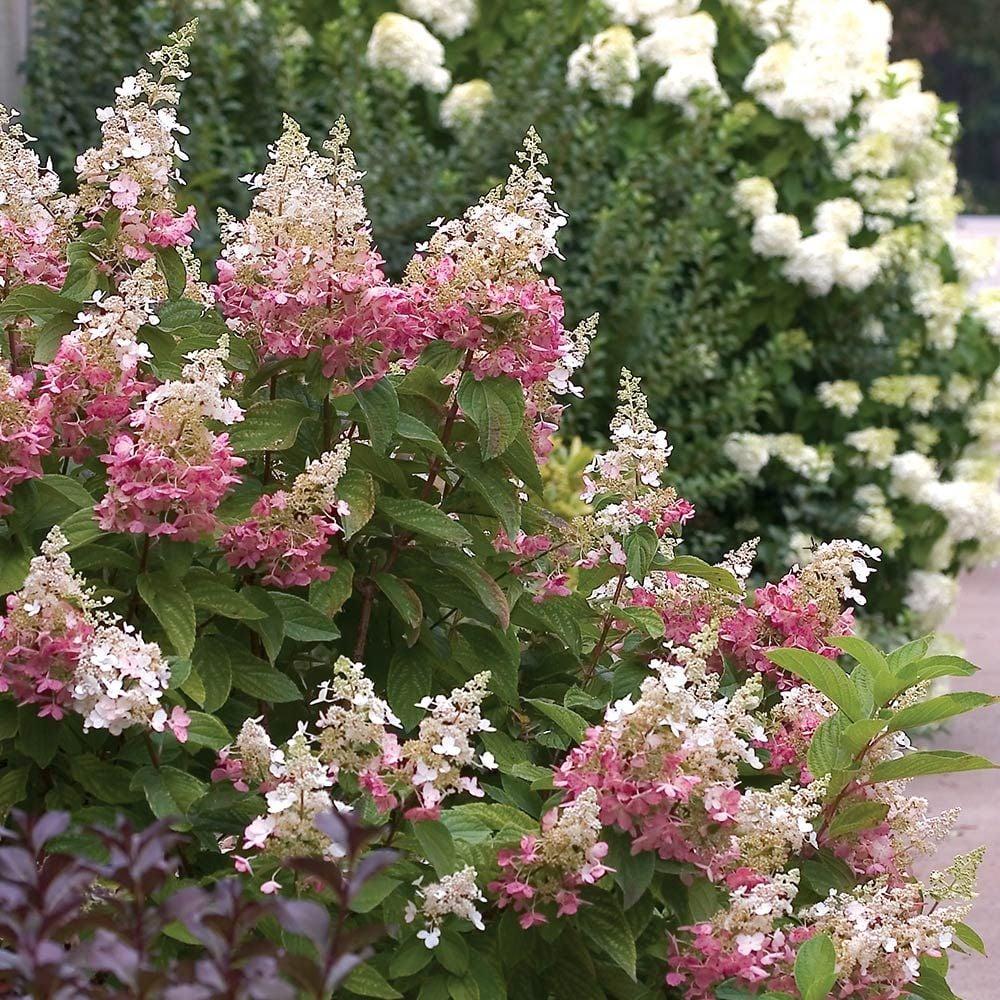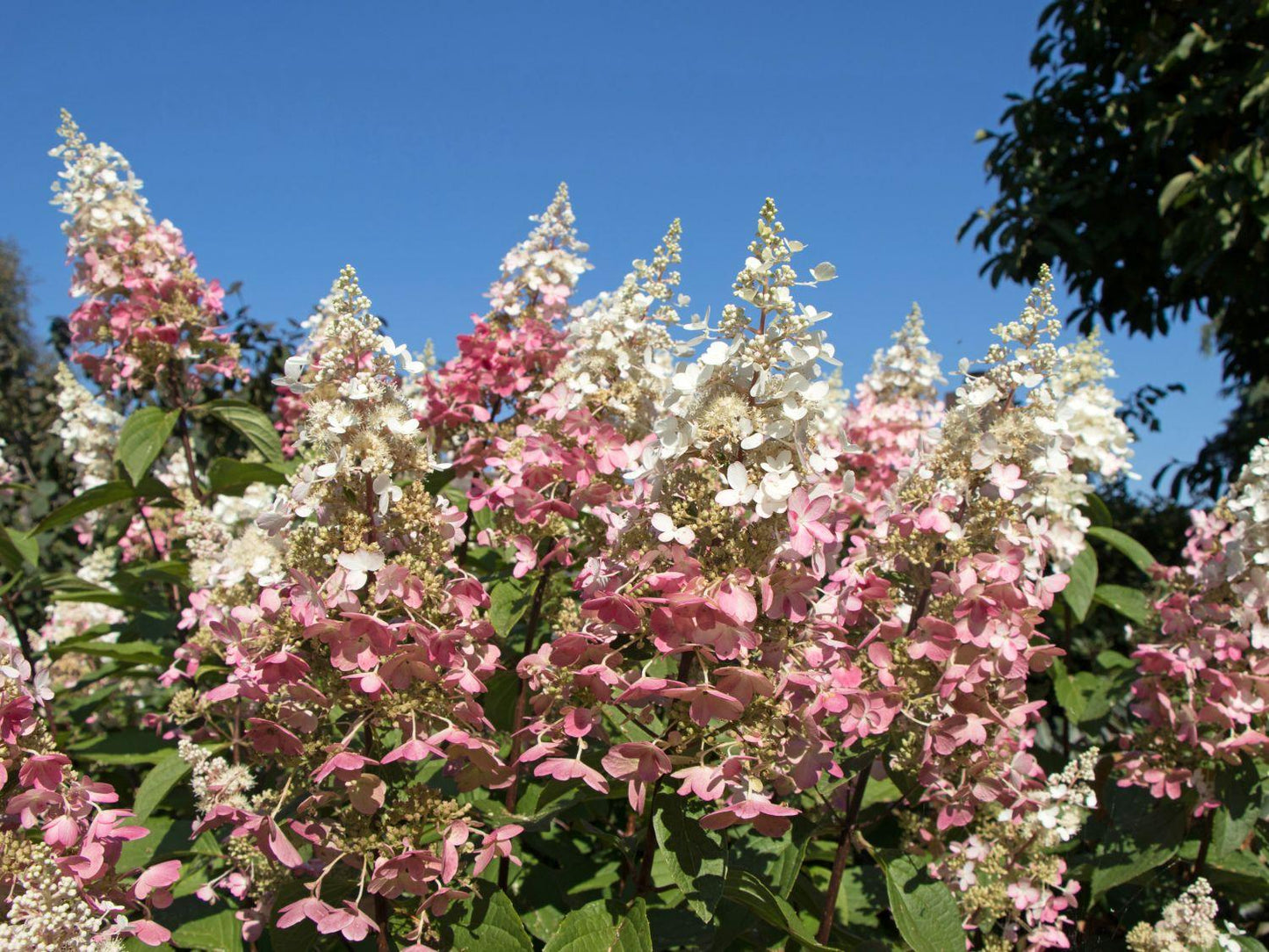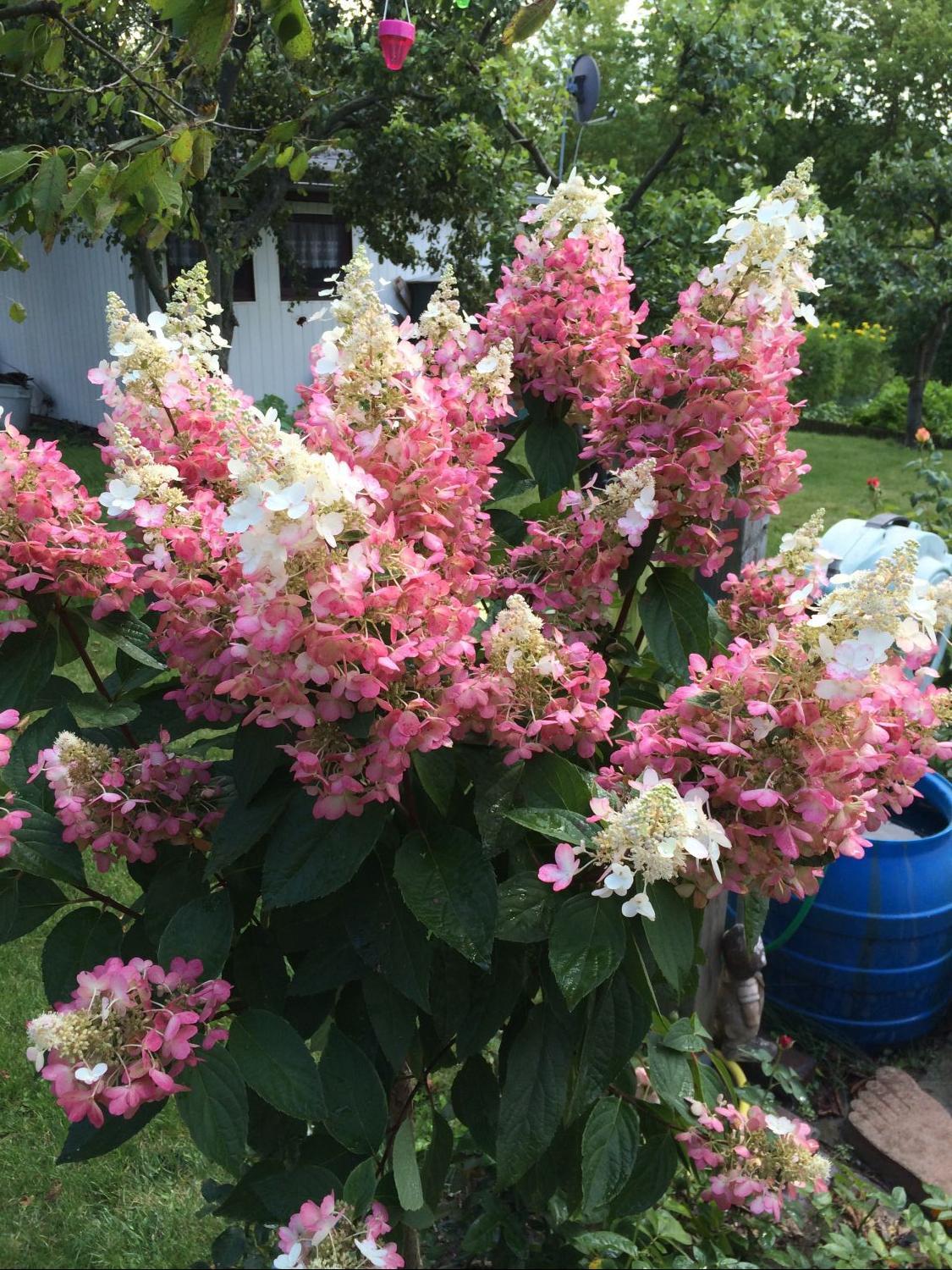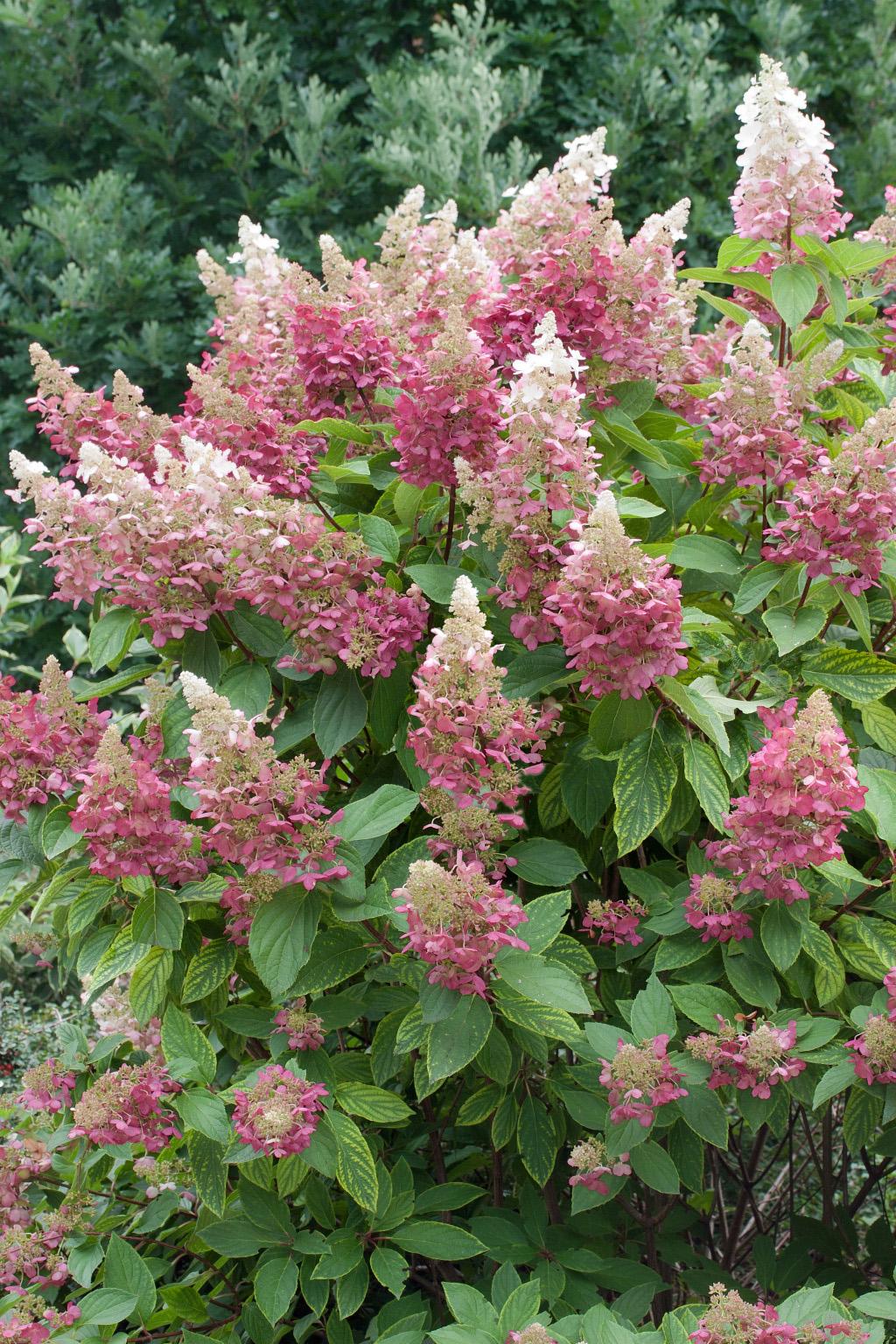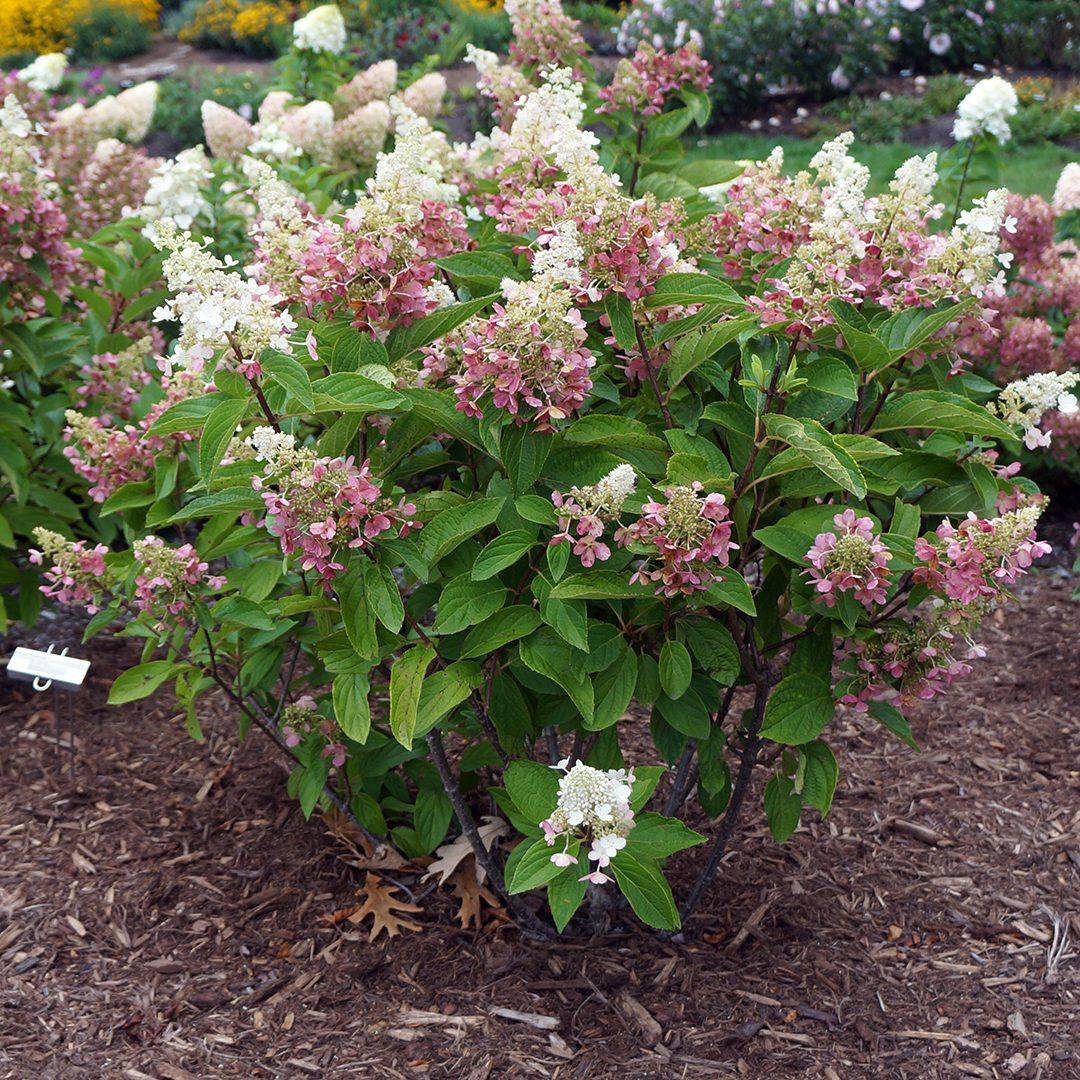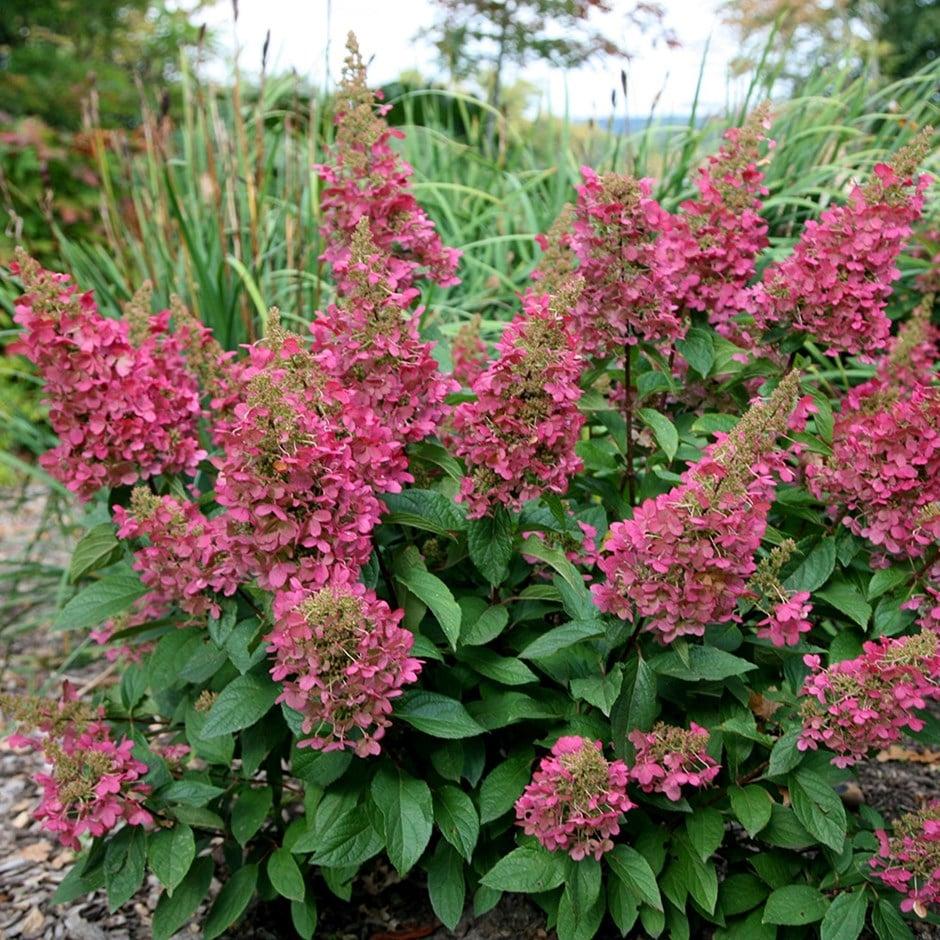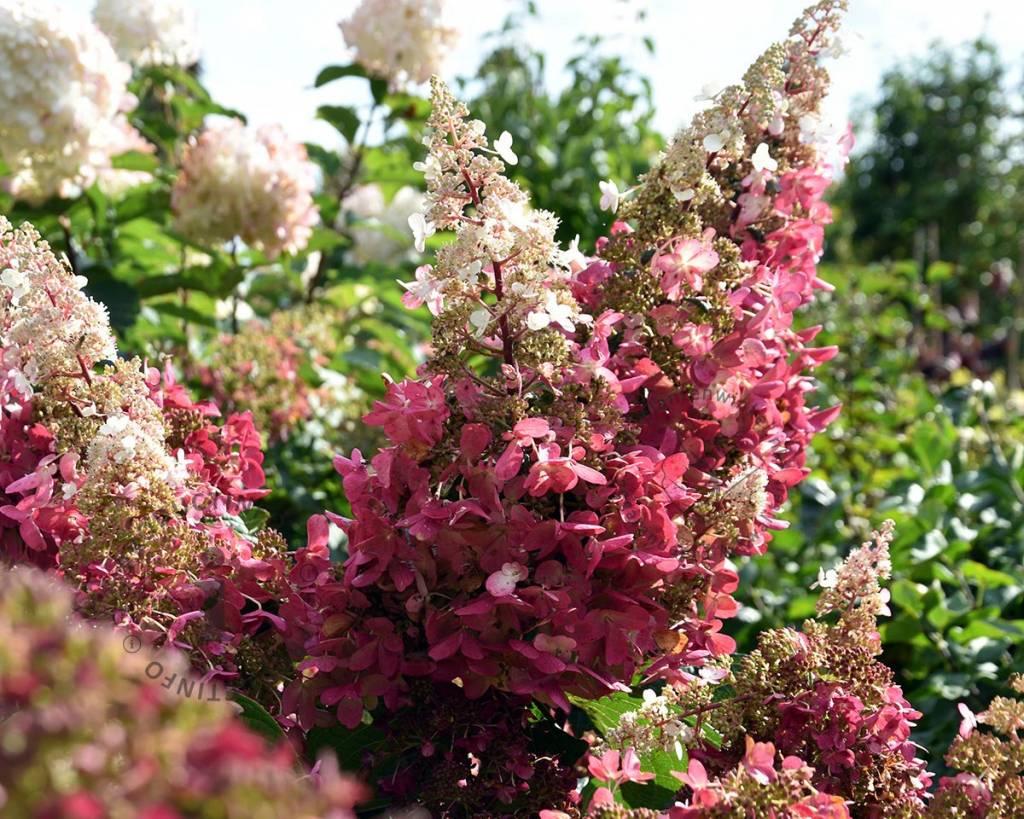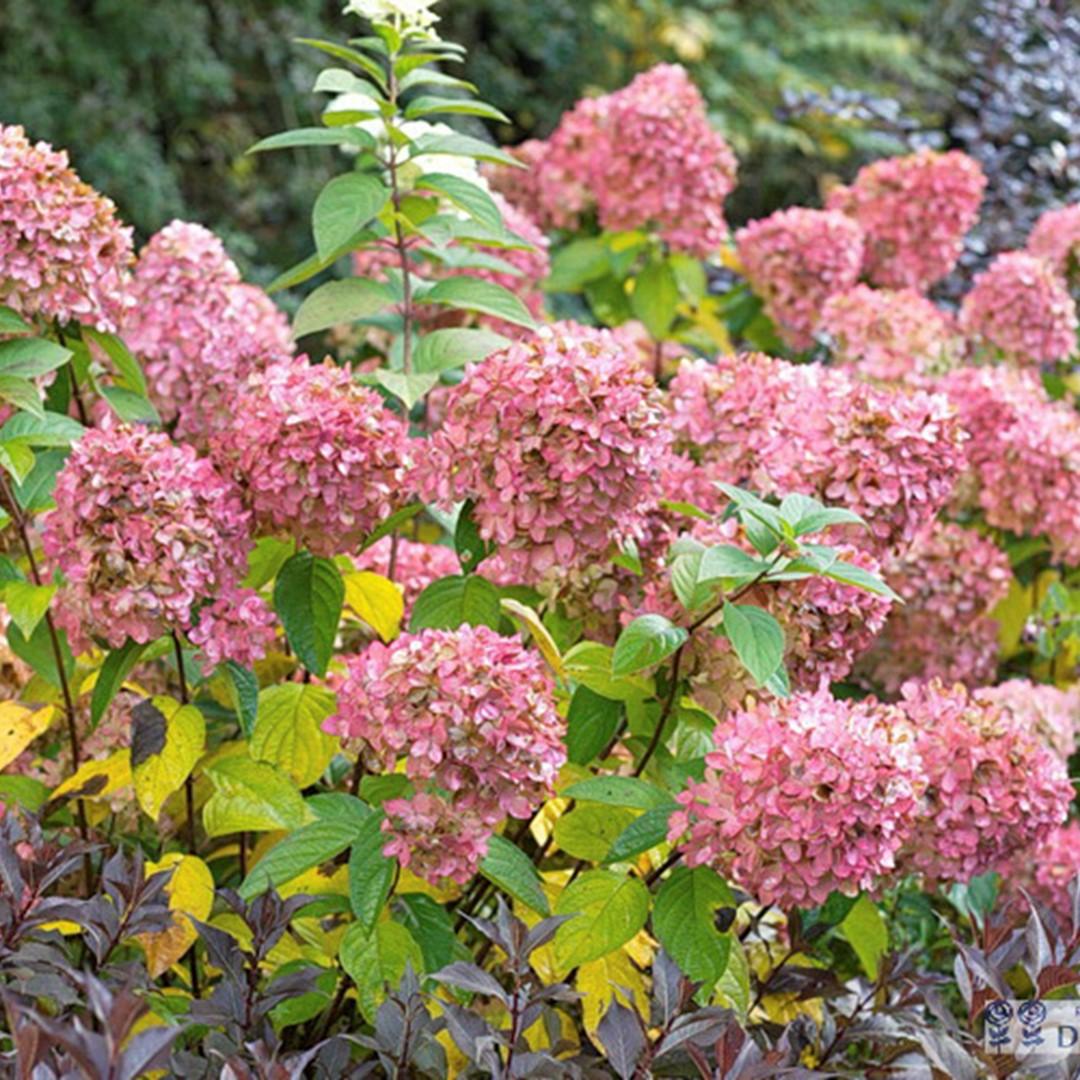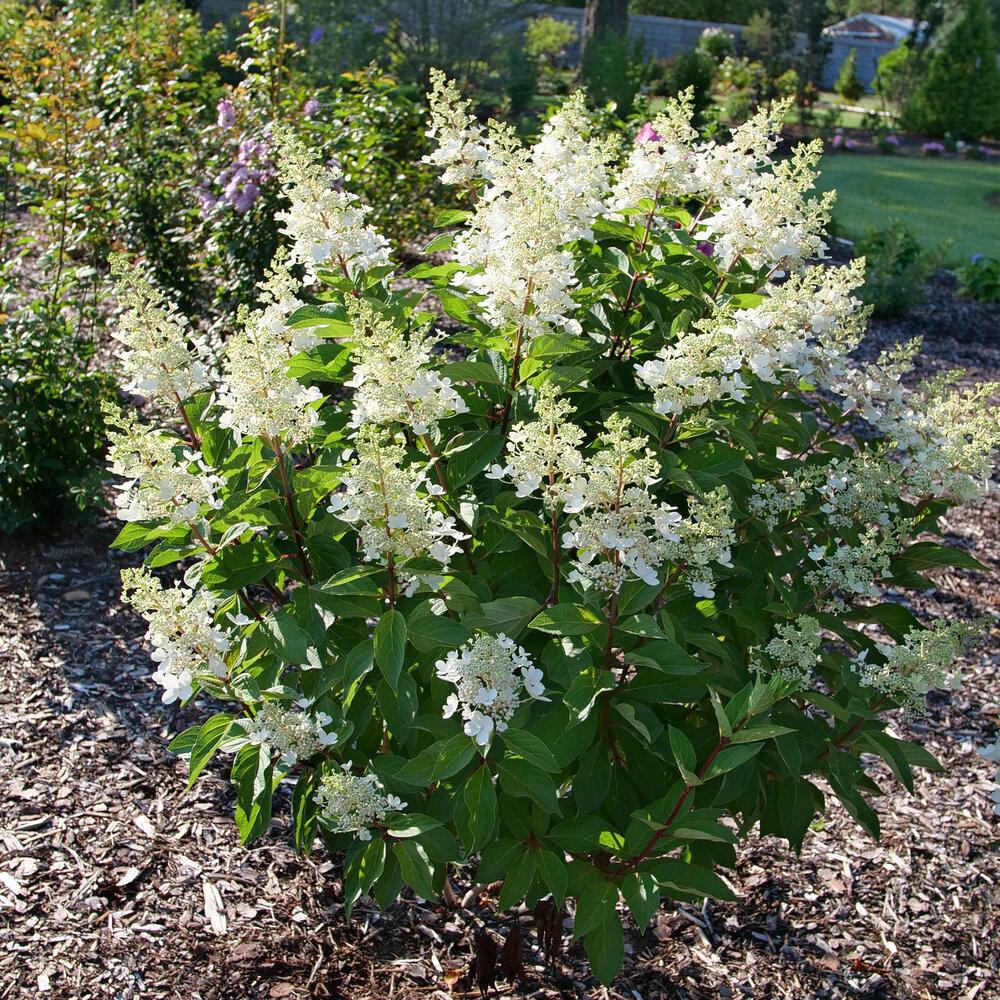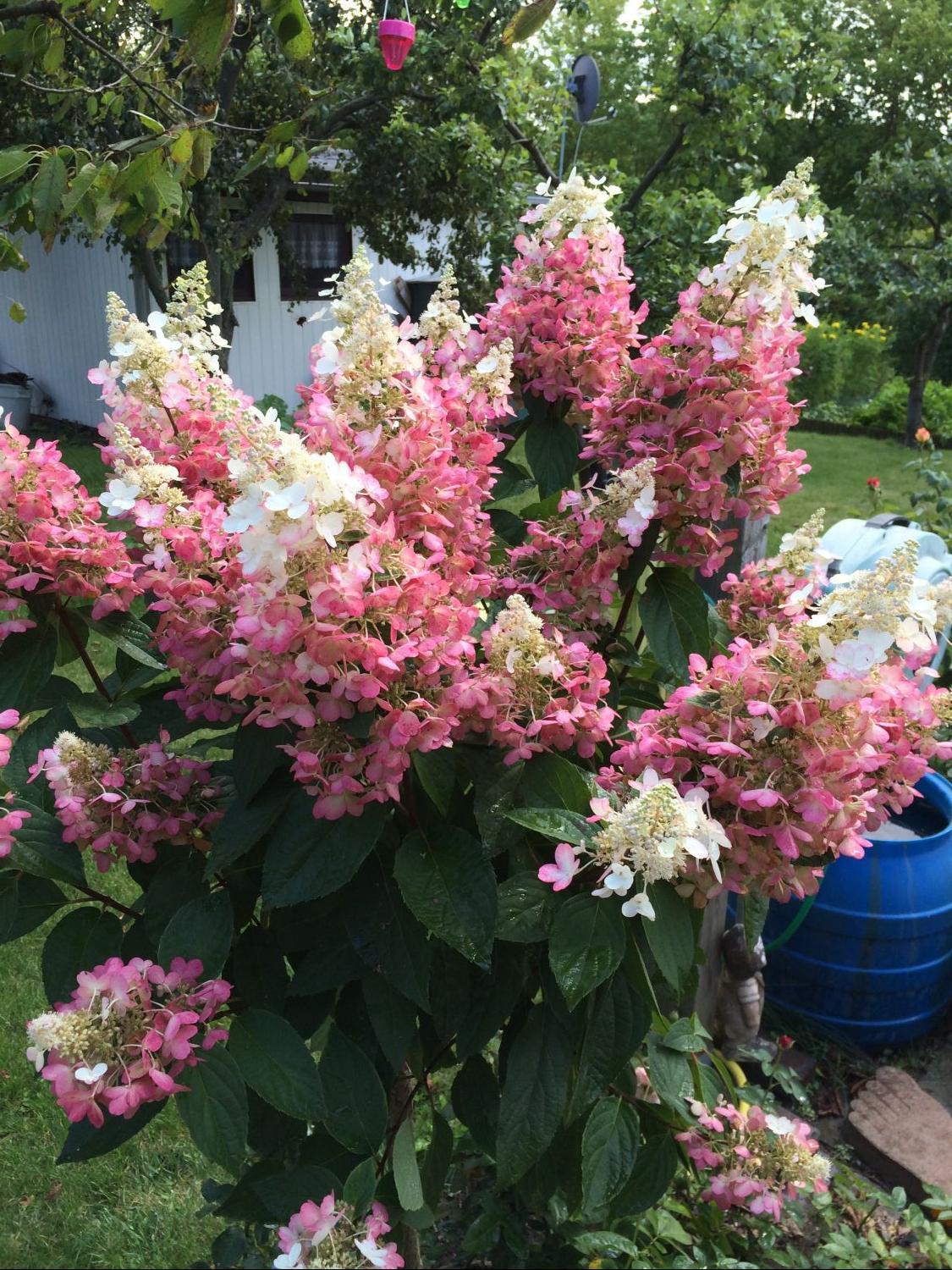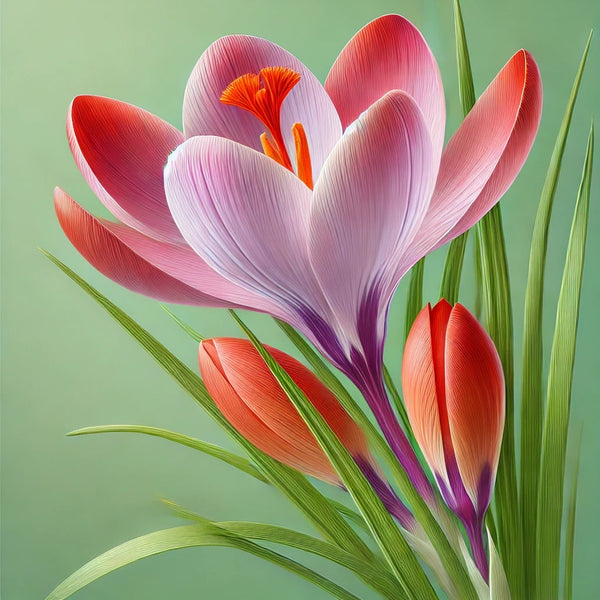1
/
of
20
Pinky Winky Panicle Hydrangea–Stunning Two–Toned Blooms 3 Gallon
Pinky Winky Panicle Hydrangea–Stunning Two–Toned Blooms 3 Gallon
Regular price
$144.00 USD
Regular price
$187.20 USD
Sale price
$144.00 USD
Unit price
/
per
Shipping calculated at checkout.
SKU:nsf5115-redcrocus
Couldn't load pickup availability
Hydrangea paniculata 'Pinky Winky'
Description
Hydrangea paniculata 'Pinky Winky' is a stunning deciduous shrub known for its large, conical flower panicles that start white and gradually turn pink from the base upwards. This unique color transition creates a striking two-toned effect that adds visual interest to gardens from mid-summer through fall.
Suggested Uses
'Pinky Winky' is perfect for mixed borders, as a specimen plant, or in mass plantings. Its long-lasting blooms make it an excellent choice for cut flower arrangements.
Plant Details
-
 Botanical Name: Hydrangea paniculata 'Pinky Winky'
Botanical Name: Hydrangea paniculata 'Pinky Winky' -
 Common Name: Pinky Winky' Panicle Hydrangea
Common Name: Pinky Winky' Panicle Hydrangea -
 Size & Growth: 6-8 feet tall and wide
Size & Growth: 6-8 feet tall and wide -
 Hardiness Zones: 3-8
Hardiness Zones: 3-8 -
 Foliage Type: Deciduous
Foliage Type: Deciduous -
 Bloom Time: Mid-summer to fall
Bloom Time: Mid-summer to fall -
 Growth Rate: Moderate
Growth Rate: Moderate -
 Light Requirements: Full sun to partial shade
Light Requirements: Full sun to partial shade -
 Attracts Pollinators: Yes
Attracts Pollinators: Yes -
 Indoor Friendly: No
Indoor Friendly: No -
 Container Friendly: Yes
Container Friendly: Yes -
 Deer Resistant: No
Deer Resistant: No -
 Pet Warning: Non-toxic to pets
Pet Warning: Non-toxic to pets -
 Fragrant: No
Fragrant: No -
 Cut Flower: Yes
Cut Flower: Yes -
 Grows Well With: Roses, Daylilies, Ornamental Grasses
Grows Well With: Roses, Daylilies, Ornamental Grasses
Care Tips
-
 Planting Instructions: Plant in spring or fall, ensuring the root ball is level with the soil surface.
Planting Instructions: Plant in spring or fall, ensuring the root ball is level with the soil surface. -
 Soil Moisture: Keep soil consistently moist, especially during dry periods.
Soil Moisture: Keep soil consistently moist, especially during dry periods. -
 Soil Type: Prefers well-drained, fertile soil.
Soil Type: Prefers well-drained, fertile soil. -
 Humidity: Tolerates average humidity levels.
Humidity: Tolerates average humidity levels. -
 Pruning Instructions: Prune in late winter or early spring to maintain shape and encourage new growth.
Pruning Instructions: Prune in late winter or early spring to maintain shape and encourage new growth. -
 Winter Care: Mulch base in colder zones to protect roots.
Winter Care: Mulch base in colder zones to protect roots. -
 Planting Depth: Plant at the same depth as the nursery pot.
Planting Depth: Plant at the same depth as the nursery pot. -
 Fertilization: Fertilize in spring with a balanced, slow-release fertilizer.
Fertilization: Fertilize in spring with a balanced, slow-release fertilizer. -
 Special Care: Deadhead spent blooms to encourage continuous flowering.
Special Care: Deadhead spent blooms to encourage continuous flowering.
Share
